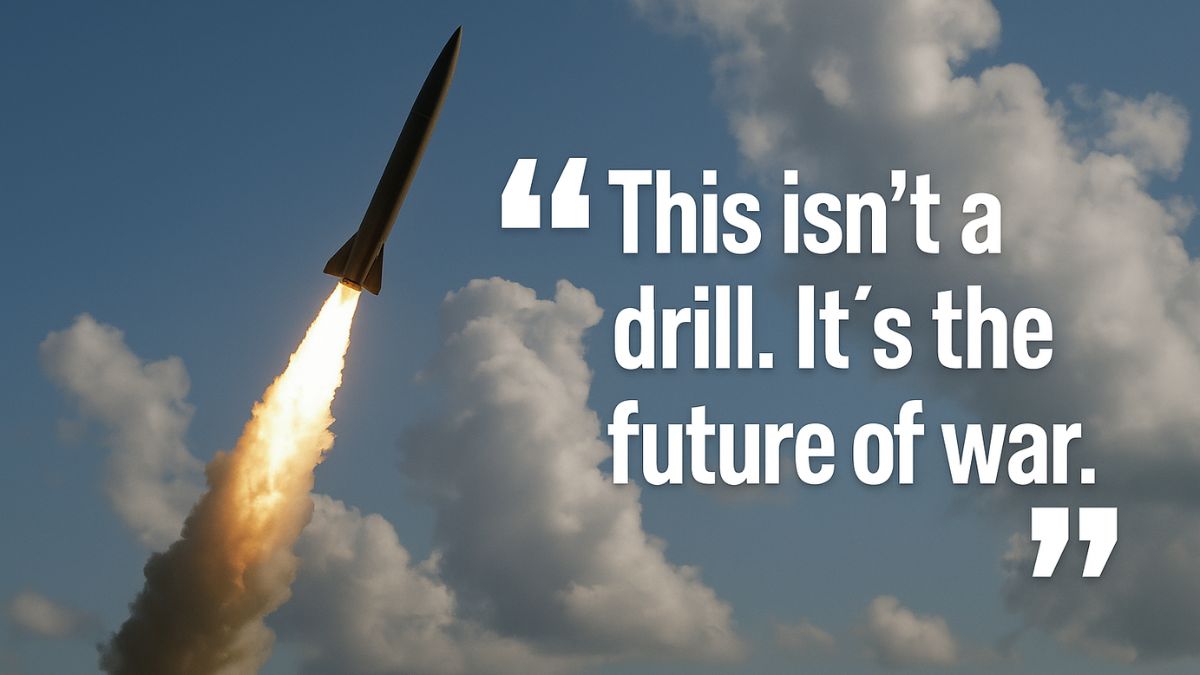New York: You don’t have to be in the Middle East to feel the tension right now. A few days ago, as many of us were scrolling past weekend memes and summer sale ads, news broke: Iran had launched a hypersonic missile at Israel. The images were dramatic—blazing skies, civilian sirens, and words we usually only hear in sci-fi thrillers suddenly became real: hypersonic. And for a moment, the entire world seemed to pause.
This wasn’t a backroom cyber-attack or a diplomatic cold war—it was a bold, visible strike with terrifying speed. What’s more, it happened in an already fragile region, between two nations whose clashes have always had global consequences. But this time? It’s different. This time, it’s about tech that moves faster than we can think—and the United Nations is now scrambling to respond.
So what exactly happened? Why is the global community watching so closely? And what could this mean for all of us, especially in a world already feeling emotionally and politically stretched? Let’s unpack the story—clear, emotional, and without the political fog.
What Is a Hypersonic Missile—and Why Iran’s Strike Shook Israel
A hypersonic missile travels at speeds greater than Mach 5 (that’s over 3,800 mph), meaning it can reach its target in just minutes—far faster than traditional ballistic missiles. What’s more alarming is how unpredictable it is: unlike older missiles that follow a fixed arc, hypersonics can maneuver mid-air, making them nearly impossible to intercept.
Iran claimed to have used its advanced Fattah-class hypersonic missile in the latest exchange, aimed at northern Israeli cities including Haifa. Israeli defense systems, including Iron Dome and David’s Sling, were pushed to their limits—though initial reports suggest they intercepted most incoming threats. Still, the use of a hypersonic weapon represents a terrifying leap in real-time warfare.
This wasn’t just about targeting a location—it was about showing the world: “We have it. We’re willing to use it.”
Timeline of the Iran–Israel Missile Exchange
This recent escalation didn’t come out of nowhere. Here’s how things intensified:
- Friday, June 14: Israel reportedly carried out targeted airstrikes on Iranian military sites believed to house drone and missile units.
- Saturday, June 15: Iran responded with a barrage of over 150 missiles and drones, including the hypersonic launch toward Haifa.
- Sunday, June 16: Israel launched counter-defensive strikes and allegedly used advanced cyberwarfare to neutralize some of Iran’s command systems.
- Civilians in Tel Aviv and Haifa scrambled for shelter, while airports across Tehran temporarily halted operations due to incoming threats.
It was one of the most rapid escalations in recent years—compressed into 72 hours of international whiplash.
How the UN Scrambled—Emergency Meetings, Warnings & Stalemates
Within hours, the United Nations Security Council called for an emergency meeting. The key issue: how to de-escalate without picking sides. Iranian officials labeled Israel’s earlier airstrike as an act of war. Israel responded by highlighting Iran’s use of advanced missile systems as “provocative and destabilizing.”
UN Secretary-General António Guterres urged “maximum restraint,” but his words felt hollow to many observers. Social media erupted with criticism—“Where’s the accountability?” “How can this keep happening?” The Security Council, once again, seemed caught between diplomacy and helplessness.
Previously Reported: Is Iran About to Strike Back? Here’s What You Should Know
Civilian Fear & Global Fallout—From TikTok Anxiety to Oil Market Panic
What sets this conflict apart is not just military—but emotional—impact. Videos on TikTok and Instagram showed Israeli and Iranian youth ducking under sirens, documenting explosions, comforting pets in bomb shelters. Hashtags like #TehranUnderFire and #HaifaAlerts went viral.
🔥Iran Turns Israel into a Fireball
Missiles rain down as #Iran unleashes fury, setting #Israeli cities ablaze. #TelAviv, #Haifa, and beyond engulfed in flames Iran’s wrath has turned the heart of Israel into a blazing battlefield.#iranisraelwar#IranIsraelConflict #IranIsrael pic.twitter.com/1TFsQSZoHT
— Rizwan Shah (@rizwan_media) June 16, 2025
The city of Haifa is burning. 🇮🇱😱 pic.twitter.com/2VZ97ErD3P
— S.Haidar Hashmi (@HaidarHashmi0) June 16, 2025
And globally? Markets felt it. Oil prices surged over 4% overnight. Airlines rerouted flights over the Middle East. The emotional toll rippled across continents—not just among people with family ties in the region, but among global citizens watching another potential war unfold in real time.
Why This Escalation Feels Different—The Hypersonic & UN Effect
Here’s the truth: this isn’t just about Israel and Iran anymore.
Hypersonic missiles represent a game-changer. Unlike drones or conventional rockets, they can bypass even the most advanced defense systems. That puts not just Tel Aviv or Tehran at risk—but any nation in range. And when these weapons start showing up in real combat, it sets a precedent others may follow.
More than that, the UN’s apparent powerlessness is worrying. If the global peacekeeper can’t rein in two nuclear-capable nations hurling sci-fi weapons at each other, who can?
What Comes Next—Ceasefire Hopes, Diplomacy & Our Role
There’s hope—always is. Backchannel talks are reportedly underway via European diplomats. Egypt and Qatar are acting as mediators. The U.S. and China have both called for de-escalation.
But while leaders maneuver, we, the global public, can’t tune out. This moment is about more than politics—it’s about empathy, truth, and humanity. It’s about holding space for those living under the shadow of war while pushing for better from those in power.
The world may be holding its breath—but it’s also watching, learning, and feeling.







